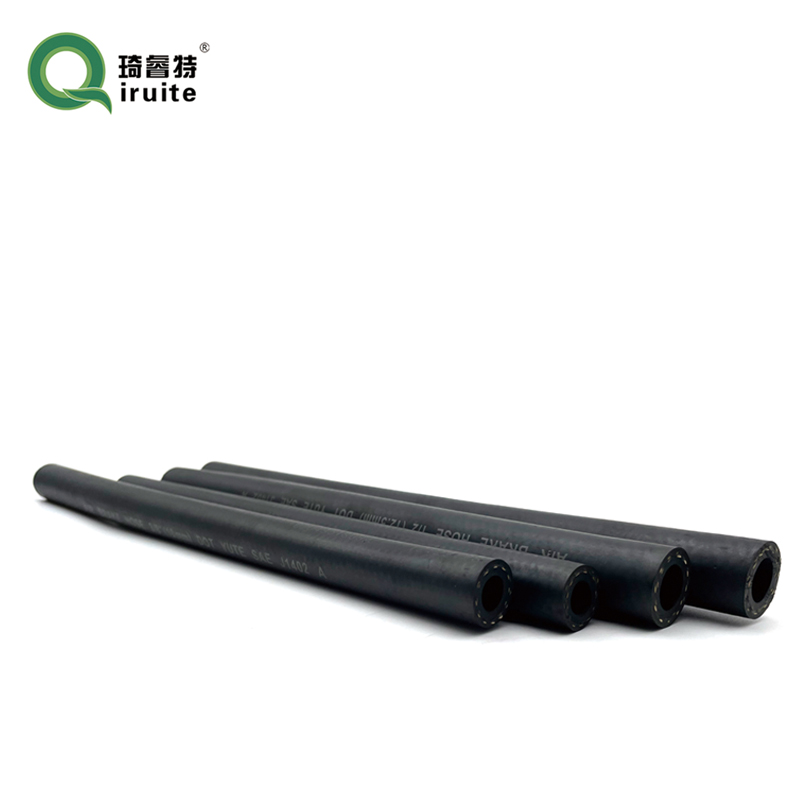Feb . 11, 2025 08:19
Back to list
how to change power steering hose
Changing a power steering hose is crucial for maintaining a vehicle's steering efficiency and safety. This guide will walk you through the complex process, drawing upon years of automotive expertise and a commitment to detail, ensuring that even the most elaborate technicalities are addressed for maximum trust and reliability.
3. Drain the Existing Fluid Place the drain pan under the hose connection to collect the hydraulic fluid. Loosen the hose fitting from the steering pump using the appropriate wrench and allow the fluid to drain completely. 4. Remove the Defective Hose Once the fluid has drained, trace the defective hose from the pump to its endpoint. Use a wrench to dislodge the hose's fittings from the power steering rack. Take care not to damage adjacent components during this process. 5. Prepare the New Hose Compare the new hose to the old one to ensure they are identical. Use the tube cutter to adjust the length if necessary, ensuring precision for a secure fit. 6. Install the New Hose Attach one end of the new hose to the steering pump, ensuring a tight, secure fit. Route the hose carefully, avoiding sharp bends or contact with hot surfaces. Fasten the other end to the power steering rack. 7. Refill the Power Steering Fluid Once the hose is in place, refill the system with the recommended type and amount of power steering fluid. This step is crucial to restore optimal steering function. 8. Bleed the System Air trapped in the system can impair steering. To bleed, keep the reservoir cap off, start the engine, and gently turn the steering wheel from lock to lock several times. Monitor the fluid level and top it off as necessary. 9. Check for Leaks With the engine running, inspect the newly installed hose for leaks at both connection points. Tighten fittings if necessary and ensure everything remains secure. 10. Test Drive For assurance of work done, take a brief test drive. Monitor the steering performance and listen for odd noises. Check the fluid level again after the drive. Conclusion Securing Expert-Level Assurance By following these detailed steps, not only does one ensure the secure installation of a new power steering hose, but also the continued safety and efficiency of your vehicle’s steering system. Prioritize regular checks and maintenance to prolong the life of the system, mitigating the need for future extensive repairs. Relying on expert advice and quality components underscores the importance of trustworthiness in automotive repairs, promoting long-term vehicular health and smooth driving experiences.


3. Drain the Existing Fluid Place the drain pan under the hose connection to collect the hydraulic fluid. Loosen the hose fitting from the steering pump using the appropriate wrench and allow the fluid to drain completely. 4. Remove the Defective Hose Once the fluid has drained, trace the defective hose from the pump to its endpoint. Use a wrench to dislodge the hose's fittings from the power steering rack. Take care not to damage adjacent components during this process. 5. Prepare the New Hose Compare the new hose to the old one to ensure they are identical. Use the tube cutter to adjust the length if necessary, ensuring precision for a secure fit. 6. Install the New Hose Attach one end of the new hose to the steering pump, ensuring a tight, secure fit. Route the hose carefully, avoiding sharp bends or contact with hot surfaces. Fasten the other end to the power steering rack. 7. Refill the Power Steering Fluid Once the hose is in place, refill the system with the recommended type and amount of power steering fluid. This step is crucial to restore optimal steering function. 8. Bleed the System Air trapped in the system can impair steering. To bleed, keep the reservoir cap off, start the engine, and gently turn the steering wheel from lock to lock several times. Monitor the fluid level and top it off as necessary. 9. Check for Leaks With the engine running, inspect the newly installed hose for leaks at both connection points. Tighten fittings if necessary and ensure everything remains secure. 10. Test Drive For assurance of work done, take a brief test drive. Monitor the steering performance and listen for odd noises. Check the fluid level again after the drive. Conclusion Securing Expert-Level Assurance By following these detailed steps, not only does one ensure the secure installation of a new power steering hose, but also the continued safety and efficiency of your vehicle’s steering system. Prioritize regular checks and maintenance to prolong the life of the system, mitigating the need for future extensive repairs. Relying on expert advice and quality components underscores the importance of trustworthiness in automotive repairs, promoting long-term vehicular health and smooth driving experiences.
Latest news
-
Ultimate Spiral Protection for Hoses & CablesNewsJun.26,2025
-
The Ultimate Quick-Connect Solutions for Every NeedNewsJun.26,2025
-
SAE J1401 Brake Hose: Reliable Choice for Safe BrakingNewsJun.26,2025
-
Reliable J2064 A/C Hoses for Real-World Cooling NeedsNewsJun.26,2025
-
Heavy-Duty Sewer Jetting Hoses Built to LastNewsJun.26,2025
-
Fix Power Steering Tube Leaks Fast – Durable & Affordable SolutionNewsJun.26,2025

